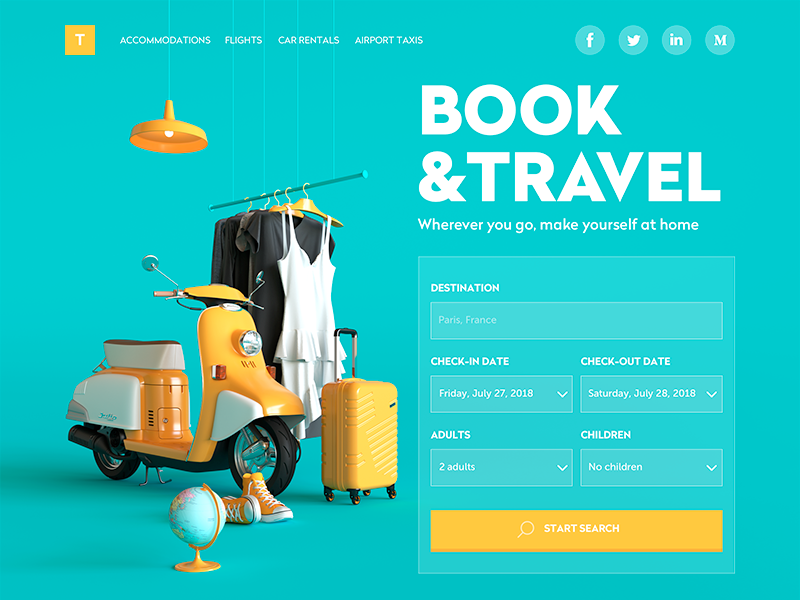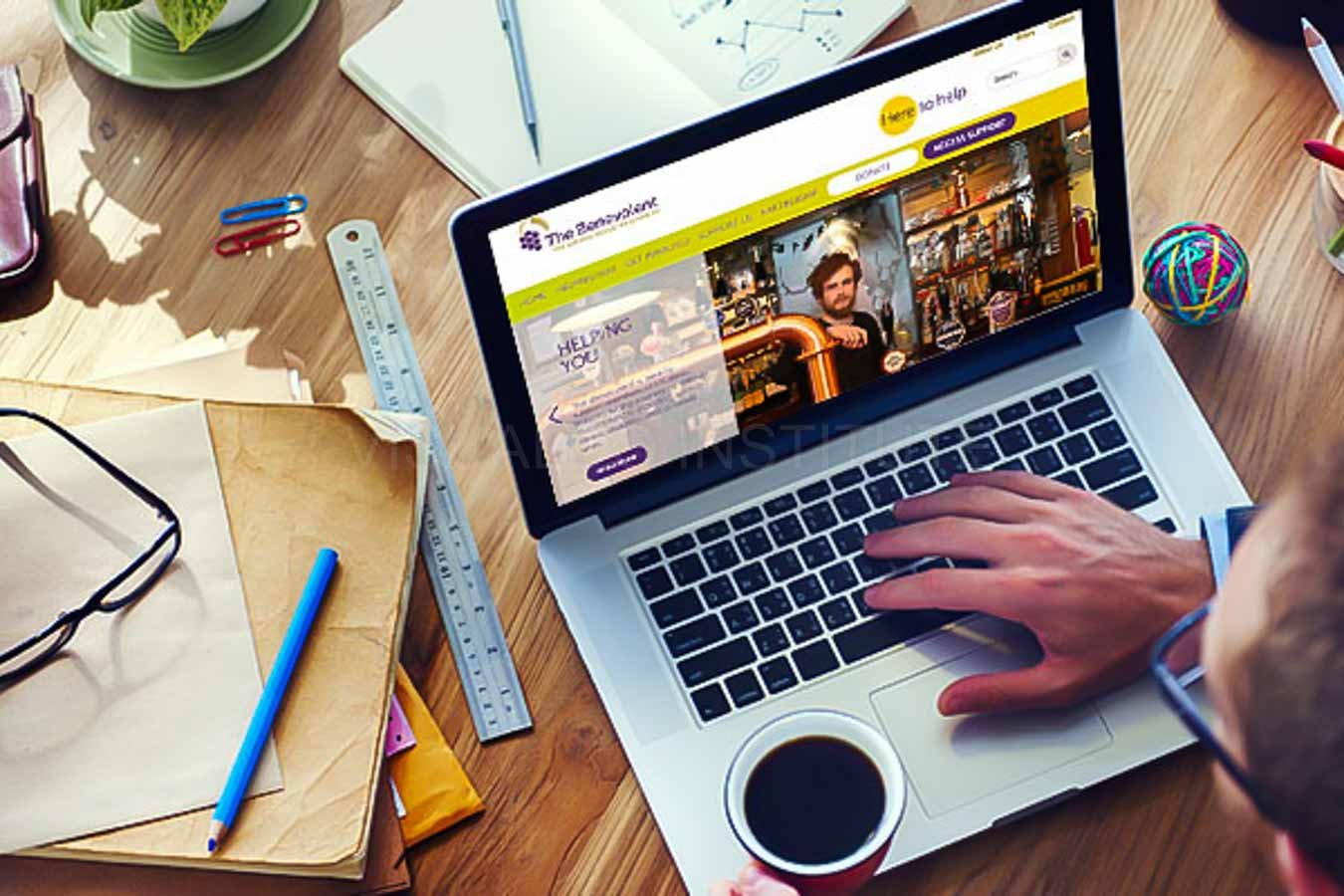Aligned Position Web Design: Creating Custom Websites That Drive Traffic and Increase Conversions
Aligned Position Web Design: Creating Custom Websites That Drive Traffic and Increase Conversions
Blog Article
The Most Effective Kinds Of Web Design to Enhance Customer Experience and Interaction
In the ever-evolving landscape of digital communication, the effectiveness of website design considerably influences user experience and involvement. Various style techniques, such as minimalist, receptive, and interactive formats, each offer special benefits that can deal with diverse individual demands. Understanding which kinds of Web style ideal serve these objectives can be pivotal for services intending to boost customer complete satisfaction and retention. Nevertheless, the concern remains: which style elements really reverberate with customers and foster purposeful engagement? The exploration of these principles exposes critical insights that may redefine your approach to website design.
Minimalist Website Design
As digital landscapes end up being progressively messy, minimalist Web design has actually become an effective technique to improving individual experience. This style approach prioritizes simplicity, concentrating on important elements while eliminating unnecessary distractions. By utilizing enough white room, simple navigating, and a restricted color palette, minimal style fosters clearness and guides individual attention to key web content.
The core principle of minimal Web layout is to produce a seamless communication for individuals. By reducing cognitive lots, customers can swiftly grasp details without feeling overwhelmed. This straight technique not only boosts functionality but additionally urges interaction, as site visitors are a lot more likely to discover a site that is very easy and visually enticing to navigate.
Additionally, minimalist style usually emphasizes typography and images, making use of these elements strategically to communicate messages properly. In significance, minimalist Web style is not simply a fad; it is a thoughtful methodology that identifies the significance of user-centered style.
Receptive Website Design
In today's varied electronic environment, responsive website design has actually ended up being important for creating a seamless user experience across a wide variety of gadgets. As individuals access websites on smartphones, laptops, tablets, and desktops, the capacity of a website to adjust its layout and content to different display dimensions and resolutions is critical.
Receptive website design utilizes versatile grids, images, and CSS media queries to ensure that Web material is provided efficiently, no matter the device made use of. This method not only enhances the aesthetic allure of a web site however also considerably improves use. Customers are most likely to involve with a website that provides a consistent experience, as it removes the stress of needing to zoom in or scroll excessively.
Furthermore, search engines, consisting of Google, prioritize mobile-friendly websites in search positions. By adopting responsive layout, companies can improve their exposure and reach a more comprehensive audience. This approach likewise streamlines web site upkeep, as a single variation of the site can accommodate all gadgets, reducing the requirement for numerous versions. In summary, receptive website design is a basic method that improves user experience, involvement, and overall fulfillment.
Interactive Web Layout
Receptive Web style prepares for improving customer experience, but interactive Web style takes this an action further by engaging individuals in an extra vibrant way - Aligned Position Web Design. By integrating aspects such as computer animations, clickable models, and real-time feedback, interactive Web design mesmerizes individuals, attracting them right into a richer surfing experience
This strategy not only fosters interaction however likewise motivates customers to explore content actively as opposed to passively consuming it. Methods such as gamification, where individuals make benefits for finishing jobs, can significantly enhance the time invested in a website and boost general complete satisfaction. Additionally, interactive functions can simplify complicated details, making it much more satisfying and digestible.

Integrating interactive layout elements can also cause higher conversion rates, as individuals are more likely to involve with a website that actively involves them. Aligned great post to read Position Web Design. Inevitably, interactive Web design changes customer experiences into remarkable journeys, making certain that visitors return time and once again
Flat Design
Defined by its see here minimalistic strategy, level layout emphasizes simplicity and functionality, removing unneeded components and concentrating on important functions. This style viewpoint prioritizes usability, guaranteeing that users can navigate interfaces easily and efficiency. By employing a tidy visual, level style gets rid of the clutter frequently found in extra ornate designs, therefore boosting individual concentrate on content and performance.
The characteristic of level style lies in its use of bold shades, straightforward typography, and geometric forms. These elements add to an aesthetically appealing interface that is both modern-day and friendly. In addition, level style fosters a feeling of clearness, permitting individuals to discern important actions and info without distraction.
Moreover, level design is specifically effective in receptive Web style, as its simpleness translates well across different tools and screen dimensions. By focusing on necessary attributes, flat style not just fulfills user demands but also motivates smooth communication, making it a vital component of effective Web style approaches.
Flexible Web Design
Adaptive website design customizes the user experience by producing several taken care of formats tailored to various display dimensions and tools. Unlike receptive layout, which fluidly readjusts a single design, flexible style utilizes unique formats for details breakpoints, ensuring ideal presentation on numerous systems. This strategy permits developers to concentrate on the special features of each tool, boosting use by supplying exactly what individuals need based on their context.
Among the key benefits of adaptive website design is its ability to enhance tons times and performance. By serving customized web content and pictures that fit the individual's tool, internet sites can decrease information usage and improve loading rates. This is specifically helpful for users with slower connections or minimal data plans.

Furthermore, adaptive style promotes a more regulated and consistent branding experience. Given that designers produce numerous layouts, they can make sure that the aesthetic elements line up with the brand's identification throughout different systems - Aligned Position Web Design. This results in a cohesive user experience, boosting interaction and advertising customer retention
Verdict
In final Visit Website thought, the combination of minimal, receptive, and interactive website design concepts significantly improves customer experience and involvement. Minimalist design promotes clearness and emphasis, while receptive layout ensures adaptability across different gadgets, advertising access. Interactive layout captivates individuals with dynamic aspects, motivating expedition and personalization. Jointly, these layout approaches add to the creation of user-friendly environments that not only improve complete satisfaction yet likewise drive greater conversion prices, emphasizing their critical importance in modern website design methods.

Minimalist design fosters clarity and focus, while receptive layout ensures adaptability across different gadgets, promoting availability. Collectively, these style approaches contribute to the development of easy to use atmospheres that not only enhance fulfillment but also drive higher conversion prices, emphasizing their critical importance in contemporary Web layout strategies.
Report this page